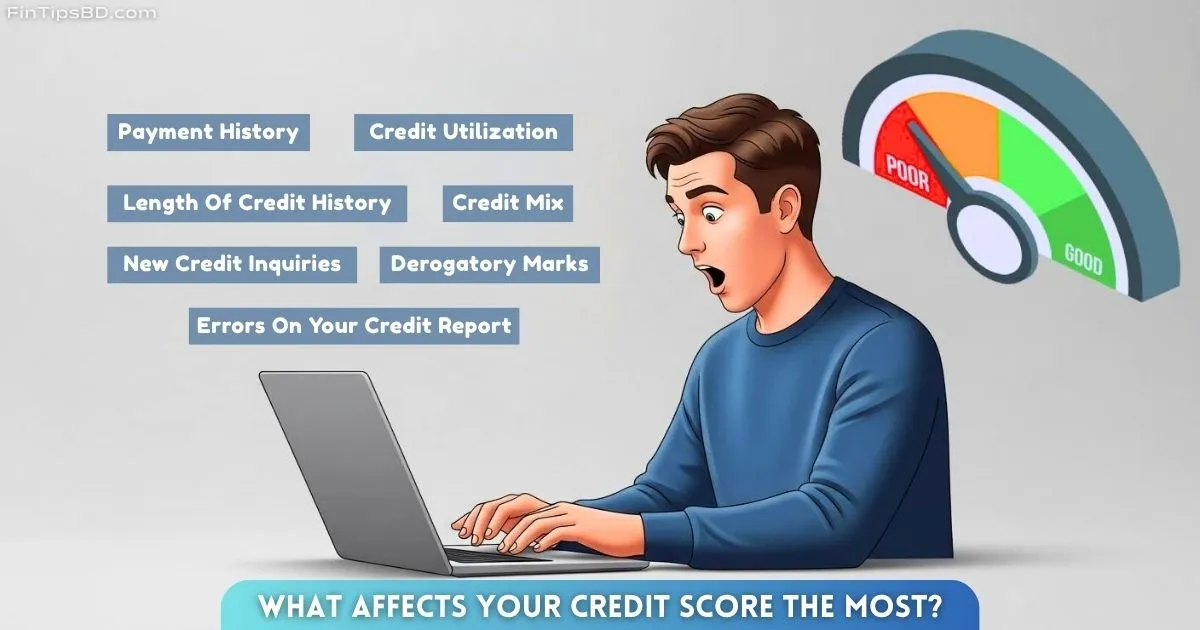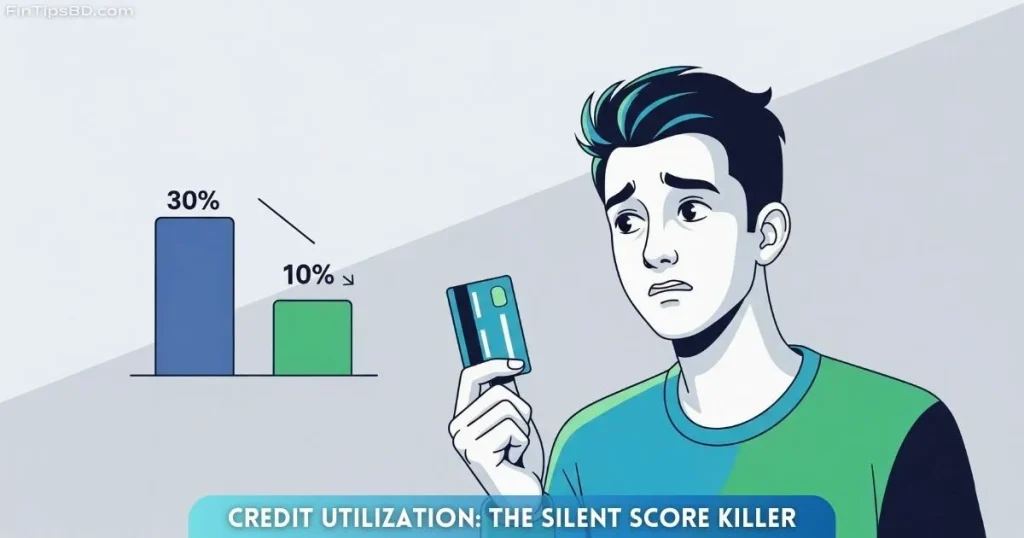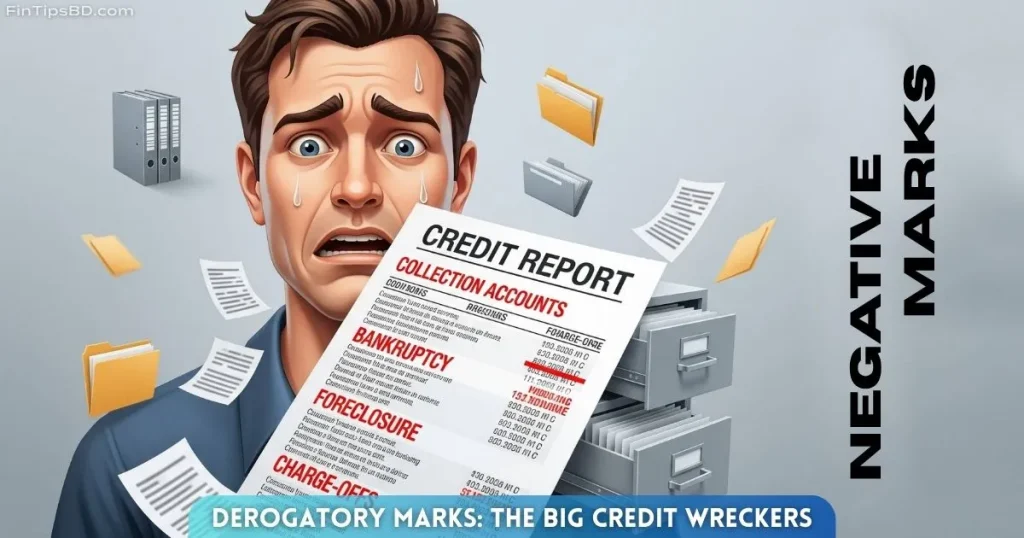What Affects Your Credit Score The Most? 7 Shocking Truths No One Told You

If you’ve ever been denied a loan, hit with a steep interest rate, or rejected for an apartment, you’ve likely asked yourself: what affects your credit score the most? And no, it’s not only about paying your bills on time—though that’s a big part of the equation.
Your credit score isn’t some random number pulled out of nowhere. It’s a critical gauge that lenders, landlords, and even some employers rely on to judge how dependable you are with money. It shows how responsibly you handle debt. The surprising part? Most people have no idea what actually makes that number rise or fall. So let’s make that crystal clear.
We’re going to break down the core factors that shape your credit score, including a few that might catch you off guard. If you’re aiming to raise your score—or just avoid wrecking it—you’ll want to pay close attention to each section.
Table Of Contents
1. Payment History: The Cornerstone of Your Credit Score
This one carries the most weight, accounting for about 35% of your FICO score. Your payment history reveals whether you’ve made past payments on time. It’s the single most vital piece of the puzzle and key to anyone wanting to learn how to improve credit score.
Miss a single payment, and your score could nosedive by over 100 points. And don’t expect it to vanish quickly—it can stay on your credit report for as long as seven years, dragging your score down the whole time. This applies to more than just credit cards—think car loans, student loans, home loans, and personal lines of credit—basically anything you pay monthly.
Pro Tip: Set up automatic payments or calendar alerts. Even making the minimum is much better than missing a payment altogether. If you’re having trouble, reach out to your lender—they might offer a short-term hardship plan.
2. Credit Utilization: The Silent Score Killer

Next on the list is credit utilization, which simply refers to how much of your available credit you’re currently using. It makes up about 30% of your credit score.
Let’s say you have a $10,000 credit limit and owe $4,000—that means you’re using 40% of your credit, which isn’t a good sign to lenders. They see it as a warning that you might be in financial trouble. The ideal target? Keep it under 30%, and if you really want to push your score higher, aim for below 10%. A lot of folks don’t realize this part is nearly as important as payment history.
Pro Tip: Pay off your balances before the statement closes or split payments throughout the month. You could also ask for a credit limit increase to lower your utilization ratio—just don’t fall into the trap of spending more because of it.
3. Length of Credit History: Why Older Accounts Matter
This factor doesn’t get much attention, but it still holds weight—around 15% of your score comes from the length of credit history. A longer track record shows lenders that you’ve managed debt responsibly over time.
Here’s a mistake people often make: closing old credit accounts they no longer use. That’s a bad move. Doing so shortens your average account age and can knock your score down. And if you’ve only had credit for a few years, lenders may hesitate to trust your long-term habits.
Pro Tip: Keep your oldest accounts active, as long as they don’t charge annual fees. Using an old credit card once every few months for small purchases is a great way to keep it alive without adding any cost.
4. Credit Mix: Why Variety Counts
Lenders like to see that you can juggle different kinds of credit—not just a wallet full of credit cards. This is what’s called your credit mix, and while it only makes up around 10% of your credit score, it can still tip the scales in your favor. A solid credit mix could include a home loan, student debt, a car loan, and a few credit cards.
That said, don’t take out a loan just to try and diversify your credit profile. It’s not worth the risk unless you actually need the loan. A hard inquiry plus new debt can do more harm than good in the short term. The slight bump you might get from variety won’t cancel out the hit from new credit.
Pro Tip: Be intentional when opening new accounts. A balanced mix helps over time, but there’s no need to force it.
5. New Credit Inquiries: Small Dings That Add Up
Each time you apply for a credit card or loan, a hard inquiry hits your credit report. Stack up too many of these in a short time, and lenders start to worry you’re desperate for credit. These new credit inquiries can lower your score by 5 to 10 points apiece, and several together can chip away at your score fast. They stay on your report for two years, though they only influence your score for the first 12 months.
Soft inquiries—like checking your own score or getting prequalified—don’t affect your score at all.
Pro Tip: Only apply for new credit when you really need it. If possible, spread out applications by at least six months. And here’s some good news: if you’re rate shopping for a mortgage or auto loan, multiple inquiries within a short time (usually 14–45 days) often count as just one hard pull.
6. Derogatory Marks: The Big Credit Wreckers

Now we’re getting into the stuff that really crushes your credit. Things like bankruptcies, accounts in collections, charge-offs, or foreclosures are called derogatory marks, and they hit your score hard. These are long-term stains on your report—sometimes lasting as long as seven to ten years. Even if you pay off the account later, the mark often stays put.
The frustrating part? Even one collection can tank your score. And the only real solution here is time—plus making sure you don’t add more damage going forward.
Pro Tip: If you’ve settled or paid off a collection, ask the lender for a pay-for-delete letter. It’s not a guarantee, but some collectors will agree to remove the negative entry if you pay in full. It never hurts to try. For small, older debts, you might be surprised what they’ll agree to.
7. Errors on Your Credit Report: The Sneaky Saboteur
It might sound surprising, but about 1 in 5 people have at least one mistake on their credit report. And sometimes those errors are serious enough to drag your score down. You could have an account that isn’t yours, a wrongly reported late payment, or a balance that’s way off. These kinds of credit report errors aren’t just annoying—they can cost you.
Pro Tip: Review your credit reports once a year at AnnualCreditReport.com. It’s free, and you can grab one from each of the three major credit bureaus. If you spot anything wrong, dispute it right away—in writing—and keep following up until it’s fixed.
Bonus: What Doesn’t Affect Your Credit Score
Time to bust a few myths. These things don’t affect your credit score directly:
- How much money you make
- Your job or employer
- Debit card activity
- Checking your own credit score
- Savings account balances
- Whether you’re married or single
Sure, lenders might still look at some of these when making decisions, but they’re not part of the actual credit scoring formula.
Final Thoughts: What Affects Your Credit Score the Most?
Let’s bring it home. Here’s a quick recap of the top three drivers of what affects your credit score the most:
- Payment history – Always pay on time. Even a single late payment can hurt badly.
- Credit utilization – Keep those balances low. Under 30% is good, under 10% is ideal.
- Length of credit history – Don’t close old accounts unless you absolutely have to. They help build trust.
When you focus on these three areas, everything else tends to follow. Understanding how to improve credit score starts with knowing what truly matters. Building good credit isn’t about shortcuts—it’s about being steady, smart, and proactive with how you manage money.
Getting to what is a good credit score takes time. But if you stick with these habits, you’ll get there.
Disclaimer : This article is for educational and informational purposes only. It does not constitute financial or legal advice. Always consult a qualified credit counselor, financial advisor, or credit bureau before making financial decisions.
